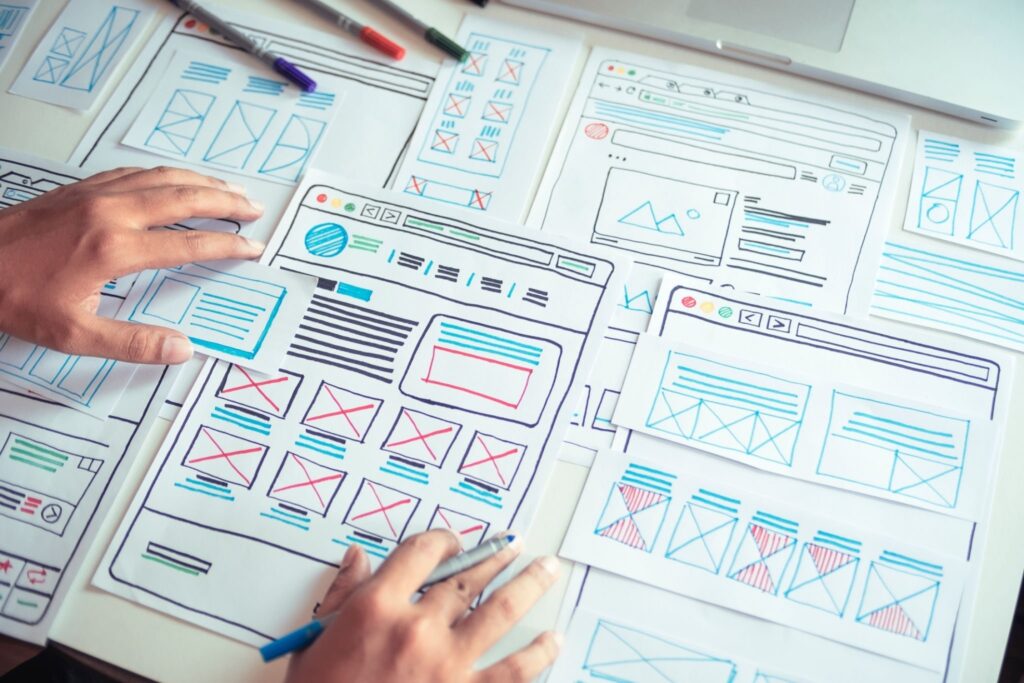Introduction
Welcome to our comprehensive guide on graphic designing! In this article, we will dive deep into the world of graphic design, exploring its various aspects, techniques, and applications. Whether you’re an aspiring graphic designer or someone looking to gain insights into this fascinating field, we’ve got you covered. Join us on this journey to unravel the art of creating visually captivating designs.
Table of Contents
- Understanding Graphic Designing: A Creative Fusion
- Key Elements of Graphic Design
- Typography: The Art of Type
- Color Theory: Painting with Hues
- Composition: Building Harmonious Layouts
- The Role of Graphic Design in Branding
- Graphic Design in Digital Media
- Web Design: Shaping Online Experiences
- Social Media Graphics: Capturing Attention
- Motion Graphics: Animating Visual Stories
- Print Design: The Tangible Expression
- Infographics: Simplifying Complex Information
- Logo Design: Crafting Brand Identity
- Packaging Design: The Art of Attraction
- FAQs about Graphic Designing
- What skills are essential for a graphic designer?
- How does graphic design impact user experience?
- What software is commonly used in graphic design?
- Can graphic design be self-taught?
- What is the future of graphic design in the digital age?
- Conclusion

1. Understanding Graphic Designing: A Creative Fusion
Graphic designing is a powerful blend of creativity, aesthetics, and technology. It is the process of visual communication and problem-solving through the use of imagery, typography, and layout. A graphic designer’s task goes beyond just creating visually appealing graphics; it involves conveying a message, eliciting emotions, and engaging the audience.
2. Key Elements of Graphic Design
Typography: The Art of Type
Typography is the art of arranging typefaces to make written language legible, readable, and visually appealing. The choice of fonts, their size, spacing, and alignment play a crucial role in enhancing the overall design and conveying the intended message effectively.
Color Theory: Painting with Hues
Colors evoke emotions and influence perceptions. Understanding color theory is essential for graphic designers to create captivating designs. By leveraging the psychological impact of different colors, designers can convey specific moods and feelings through their artwork.
Composition: Building Harmonious Layouts
Composition refers to the arrangement of visual elements within a design. Achieving balance, rhythm, and unity in the layout is crucial for creating aesthetically pleasing and engaging designs. Proper use of white space and alignment can significantly impact the overall visual appeal.
3. The Role of Graphic Design in Branding
Branding is the process of establishing a unique identity for a company or product. Graphic design plays a pivotal role in branding by creating logos, visual assets, and marketing materials that reflect the essence of the brand and leave a lasting impression on consumers.
4. Graphic Design in Digital Media
Web Design: Shaping Online Experiences
Web design is about creating user-friendly and visually striking websites that provide seamless navigation and an exceptional user experience. A well-designed website enhances a brand’s online presence and increases user engagement.
Social Media Graphics: Capturing Attention
In the fast-paced world of social media, eye-catching graphics are essential to stand out from the crowd. Graphic designers create visually compelling social media posts that grab the audience’s attention and encourage them to interact with the content.
Motion Graphics: Animating Visual Stories
Motion graphics add movement and animation to static visuals, bringing stories to life in an engaging way. Whether used in marketing videos or explainer animations, motion graphics create dynamic and memorable experiences for the audience.
5. Print Design: The Tangible Expression
Print design involves creating physical materials such as brochures, flyers, posters, and business cards. Skillful print design captures the brand’s identity while enticing the audience to interact with the printed materials.
6. Infographics: Simplifying Complex Information
Infographics combine data, information, and visuals to present complex ideas in a clear and concise manner. These visually appealing representations help the audience grasp information quickly and retain it better.
7. Logo Design: Crafting Brand Identity
A logo is the face of a brand, representing its values and identity. Graphic designers work meticulously to design unique logos that leave a lasting impression and make the brand easily recognizable.
8. Packaging Design: The Art of Attraction
Packaging design is vital for product branding and marketing. Effective packaging grabs attention on the shelves, communicates product benefits, and influences consumer purchasing decisions.
9. FAQs about Graphic Designing
What skills are essential for a graphic designer?
To excel in graphic design, essential skills include creativity, proficiency in design software, understanding of color theory, typography expertise, and effective communication skills.
How does graphic design impact user experience?
Graphic design significantly affects user experience by creating intuitive interfaces, visually appealing websites, and compelling visuals that engage users and keep them coming back for more.
What software is commonly used in graphic design?
Popular graphic design software includes Adobe Illustrator, Adobe Photoshop, Sketch, and CorelDRAW, among others. Each tool serves specific design purposes and offers a range of features for designers.
Can graphic design be self-taught?
Yes, graphic design can be self-taught. With abundant online resources, tutorials, and courses available, aspiring designers can learn and improve their skills at their own pace.
What is the future of graphic design in the digital age?
The future of graphic design looks promising as technology continues to evolve. With advancements in virtual reality, augmented reality, and interactive design, designers will have exciting opportunities to explore new creative realms.
10. Conclusion
Graphic designing is an ever-evolving field that weaves art and technology to communicate messages, evoke emotions, and create compelling visual experiences. From web design to print materials, logos to infographics, each aspect of graphic design plays a vital role in shaping brands and enhancing user interactions. By harnessing creativity and embracing technological advancements, graphic designers continue to redefine visual communication and leave a lasting impact on the world. So, unleash your creativity and dive into the fascinating world of graphic designing!


0